Explore whether MIP or Quickbooks is the better accounting software for your nonprofit based on the key differences.
Replacing an introductory accounting solution like QuickBooks with a mid-market product such as MIP Fund Accounting is one of the most important decisions a nonprofit will make. And one of the most difficult.
Upgrading to an objectively superior solution like MIP sets a nonprofit up for sustained growth driven by accounting excellence. But it also comes at a higher cost, involves an extended transition period, and means abandoning the familiarity of QuickBooks. The difficult question facing nonprofit leaders is whether they’re overdue for an upgrade or fine with what they have?
JMT Consulting has worked with 2,000+ nonprofits over multiple decades, including countless clients seeking the right accounting software. We are vendor agnostic. We are not neutral, however. And in our experience, nonprofits will eventually outgrow QuickBooks and require a purpose-built solution like MIP.
If you’re on the fence about which product to trust with your nonprofit’s finances, explore five key differences between MIP and QuickBooks. You know what your nonprofit needs. Now find out which product delivers.


Auditing Excellence
QuickBooks has one of the most user-friendly platforms on the market. That’s an asset to a small nonprofit just starting out. But it’s a liability to a more mature organization subject to auditing requirements. QuickBooks sacrifices auditing controls in favor of accessibility. Users can even reclass or reverse transactions without leaving a record in the audit trail, making it difficult or impossible to complete a trustworthy audit.
MIP exemplifies what strict audit controls look like. For one, it forces these controls out of the box so the audit trail begins immediately. The system also balances the need for users to find and amend data with the need to limit and track any changes made. In practice, MIP automatically creates the kind of unbroken audit trail that transparent nonprofits depend on (and auditors love to see).
Expansive Features
As a solution designed for beginners, QuickBooks has a relatively limited number of features, many of them simplified for general users. The chart of accounts, for instance, leaves much to be desired, and QuickBooks can’t handle grant tracking. In the absence of these key features, nonprofits rely extensively on Excel, which is an amazing product – but it’s fundamentally a workaround.
With MIP, nonprofits have a true all-in-one accounting platform with 30 modules for vital administrative functions: General ledger, AP/AR, Bank Reconciliation, Payroll, and many more. Offering gold-standard capabilities for fund accounting, MIP lets users program dozens of segments into a fully-customized chart of accounts. Excel becomes irrelevant with a solution that can do exactly what nonprofit accountants require.
Optimal Reporting
The sparse toolkit in QuickBooks contains only the most basic reporting capabilities. Building reports takes extra time because it often requires stitching together various data sources and overcoming different system limitations. Worse, the reports Quickbooks can build offer a shallow perspective that leaves nonprofits in the dark about their true performance.
MIP has exemplary reporting capabilities thanks to the segmented chart of accounts mentioned earlier. Users can easily mix and match various data sources to create highly-customized reports focused on whatever merits exploration. A simple yet powerful report writer also lets anyone with authorization create reports and replace unknowns with answers.
Nonprofit Specialization
QuickBooks aims to satisfy as many users as possible. It wasn’t built to be a nonprofit-specific solution, and especially not a solution for nonprofits managing multiple funding sources with restriction requirements. The incompatibility between Quickbooks and nonprofit accounting only becomes more apparent with time as more of accounting bleeds into Excel.
The list of accounting solutions built specifically for nonprofits is small and contains MIP at the top. Everything from allocations to budgeting to reporting reflects the unique needs of nonprofits while conforming to all applicable accounting and regulatory standards. With a specialized solution like MIP, accountants don’t have to wonder if their software is up to the task.
Focused Support
Serving hundreds of thousands of users means QuickBooks rations its support resources carefully. Users only get 30 days of support from a basic license. Making matters more difficult, QuickBooks doesn’t have a robust partner community. Frustrated users without a place to turn for answers and help often rely on internet forums as a last resort.
The situation is exactly reversed with MIP. Users have a vast ecosystem of support resources they can tap into. That includes support from MIP itself, which is known for being accessible and in-depth. MIP also has a community of partners like JMT Consulting that exist to help nonprofits optimize their accounting software throughout its lifecycle.
MIP vs. Quickbooks: Final Verdict
If your nonprofit is leveraging Quickbooks and it’s (1) meeting your needs from a functionality standpoint and (2) giving you the visibility you need to make strategic decisions, that’s great! But as soon as it isn’t, we can help you explore a solution that is designed to meet the complex requirements of your nonprofit (like MIP Fund Accounting). Remember: it’s better to transition sooner than to rely on the wrong solution for longer.
